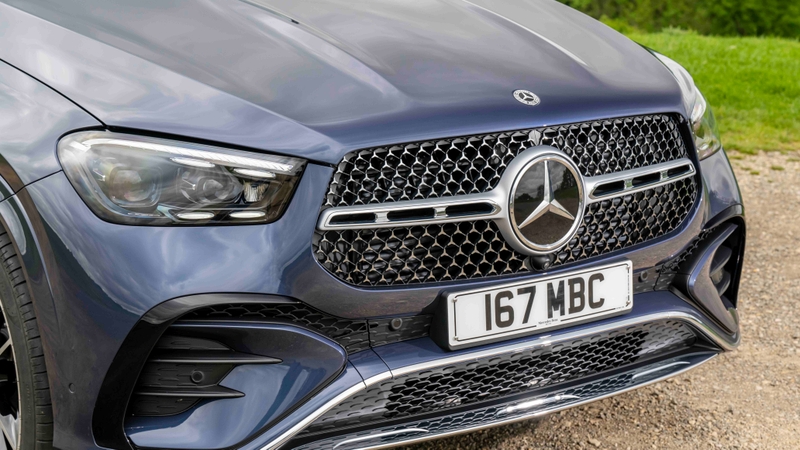
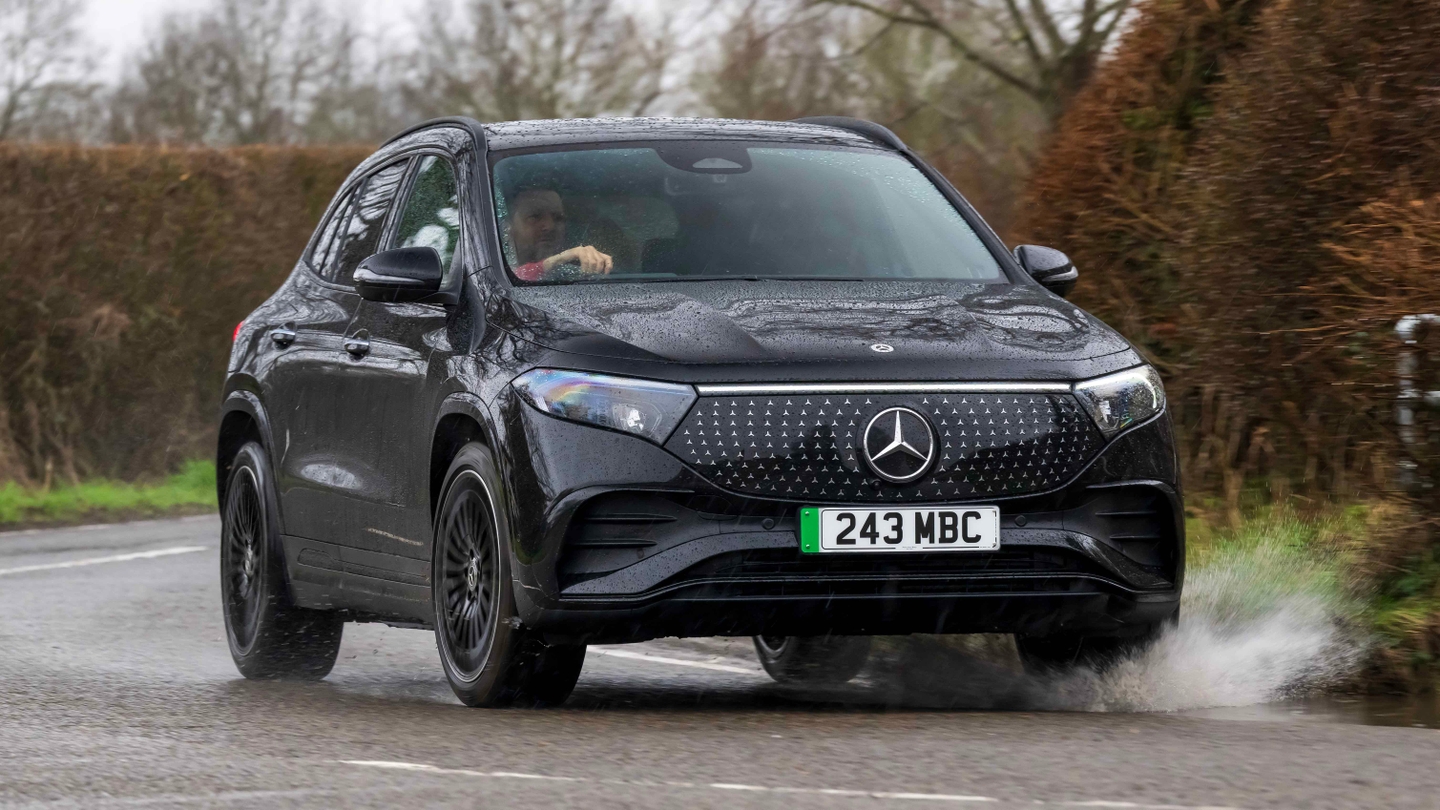
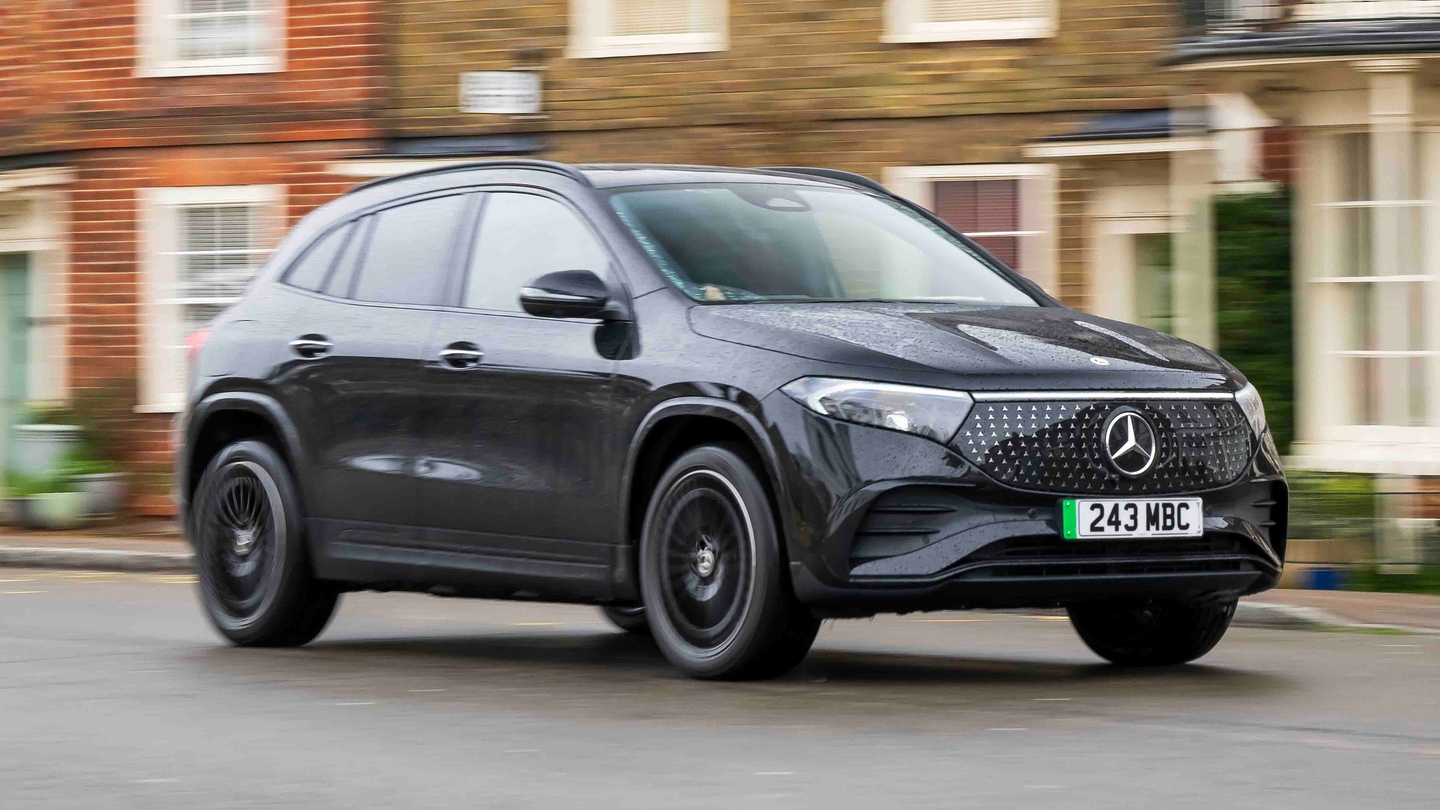

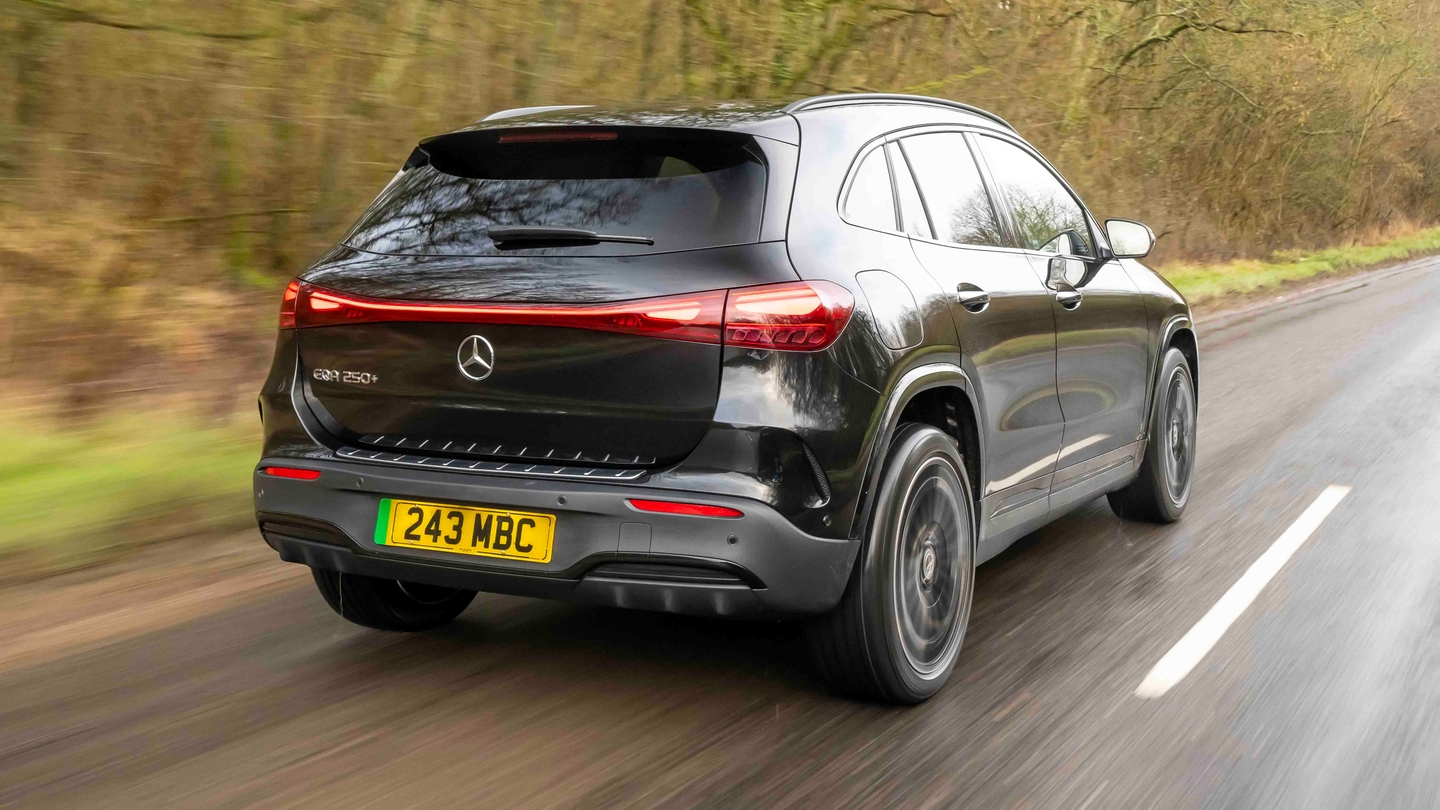
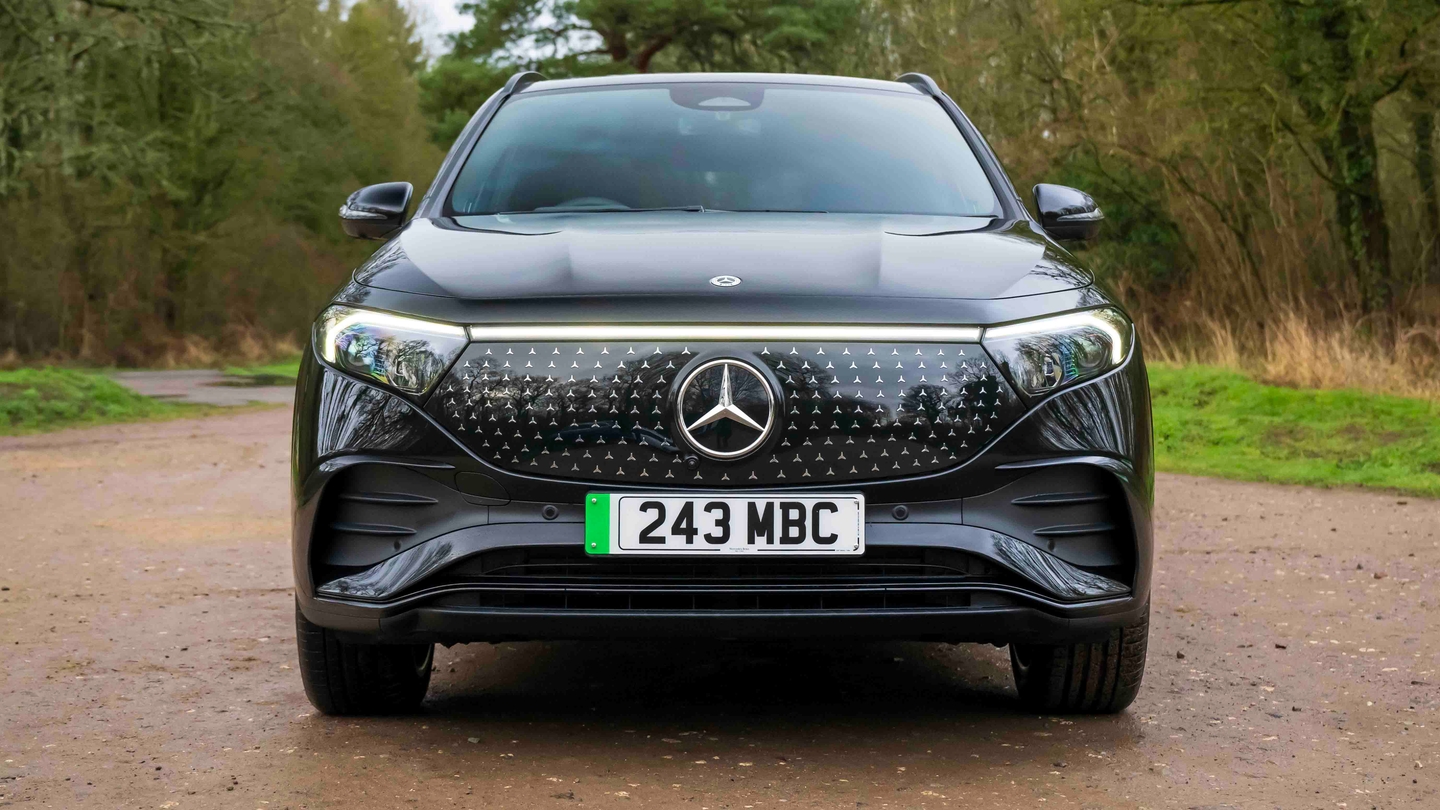



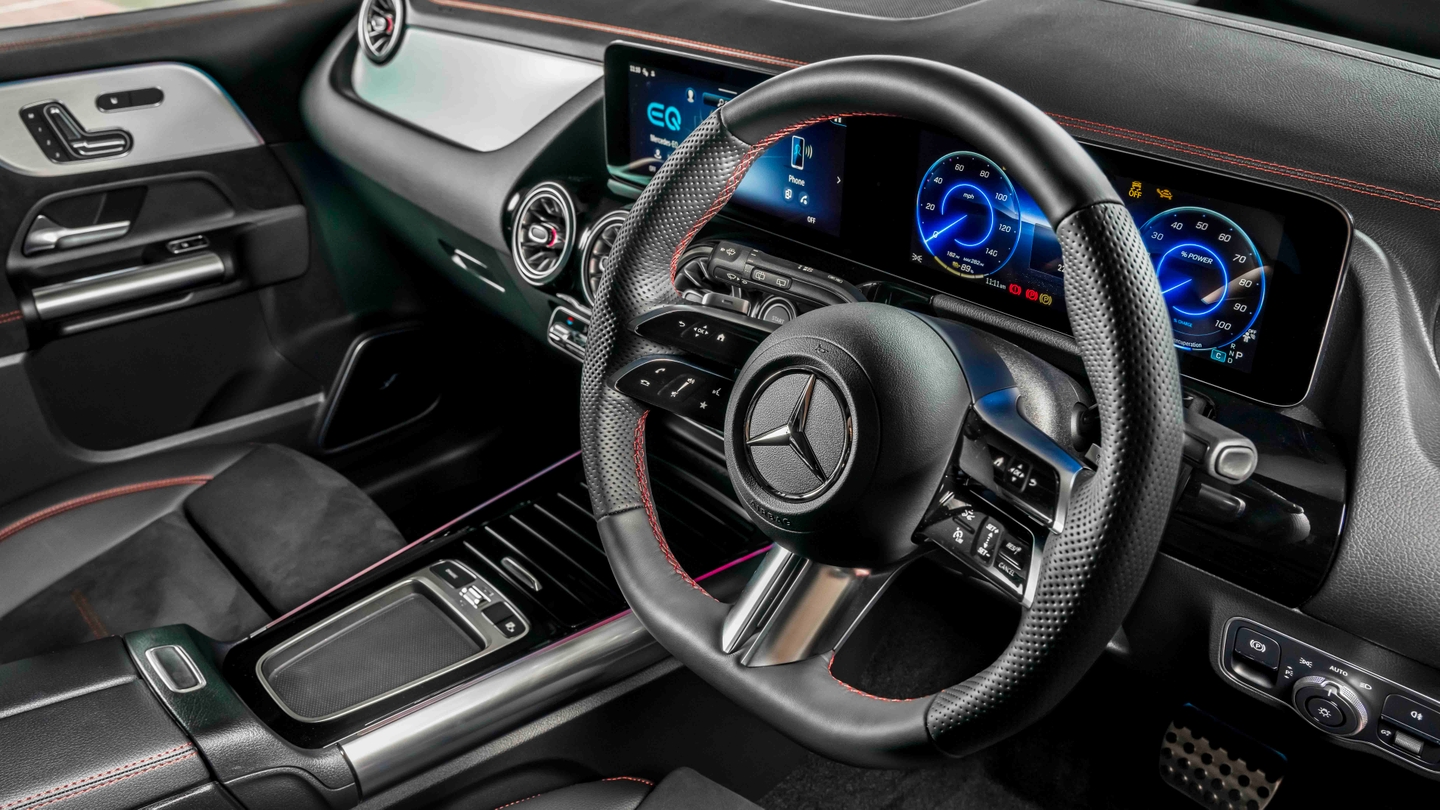

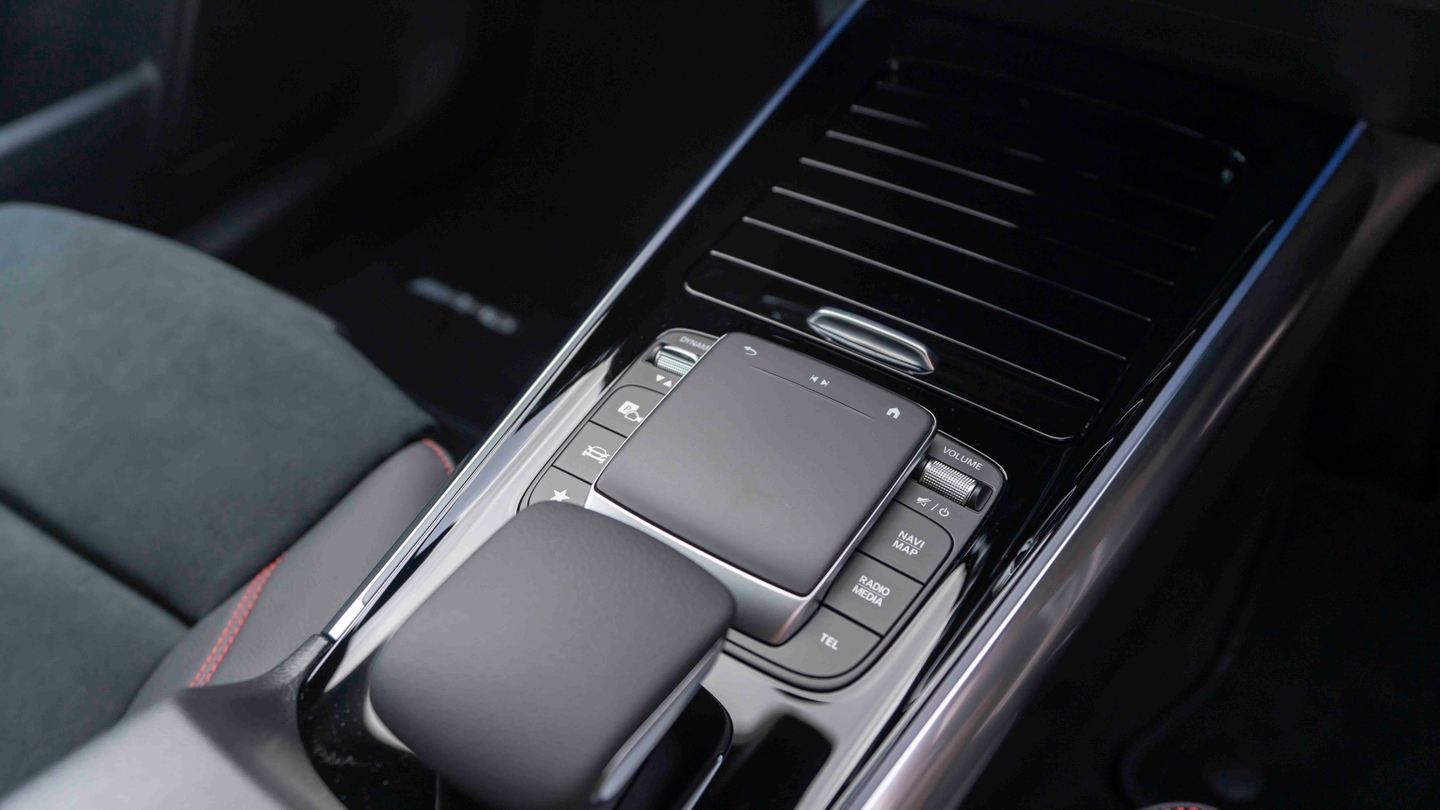




Mercedes EQA Review

The EQA is Mercedes’ entry-level electric car, and is based on the fuel-powered GLA.
It has a premium interior, instant acceleration and is comfy on bumpy roads, but is compromised by having to use the same underpinnings as a combustion car.
- Comfortable cruiser
- Feels fast from a standstill
- Mostly high-quality interior
- Boot is much smaller than rivals
- Expensive to buy and run
- Mediocre driving experience
Should I buy a Mercedes EQA?
You might know that Mercedes created the world’s first ‘car’ – the Benz Patent-Motorwagen – in 1886. But, in the take-up of electric cars – perhaps the biggest automotive revolution since the early days of motoring – Mercedes has been less than pioneering. It certainly isn’t late to the party, with a burgeoning range of electric models (eight car and five van models as we write this), but the majority of its EVs so far have been built using a lot of the same parts as fuel-powered cars.
You might see that as Mercedes sensibly hedging its bets in a time of confusion and insecurity around EVs. Basing the EQA on the same underpinnings as the Mercedes GLA (and, therefore, the A-Class) reduces cost and complexity.
Besides a doleful face and a smart full-width rear light bar, the EQA looks the same as the GLA. There’s the same high-quality interior, too, with large screens for the dial display and the touchscreen. And sporty red stitching on AMG Line models.

Prices aren’t the same. Far from it – buy a new EQA and you’ll be spending £50,000 or more – £12,000 more than an equivalent petrol GLA. Thankfully, if you’re looking at used EQAs, there’s much less of a difference – in fact, you might find an EQA is cheaper to buy than a GLA with the same age and mileage.
Then you’ll save money on the cost of electricity versus petrol (especially if you charge at home). But insurance is going to cost a little more for the EQA than the GLA and, from April 2025, every EQA will be subject to a yearly road tax bill of around £600 until the car is six years old.
The downside of using the same underpinnings as a petrol car is that the electric gubbins have to be squeezed in where they can. While we can live with the smaller storage cubbies than a car developed specifically as an EV, the EQA’s boot is 150 litres down on a petrol GLA. If you’re eyeing up the EQA as a family car, you might need to pack light on day trips.
Interior and technology

Like all of Mercedes’ recent models, the EQA has a lovely looking interior. Slide into the suede-trimmed seats of AMG Line models and you’ll be looking at two large, glossy screens, a premium-looking steering wheel and a row of metallic circular air vents.
The touchscreen and digital instrument cluster are connected in one panel, and both run Mercedes’ MBUX infotainment software. The twin 10-inch screens look fantastic and are quick to respond to your inputs. While the initial menus are easy to operate, if you dive down into the submenus it all becomes a bit busy. Find out what happened when we tested how distracting different car touchscreens are here.

Similarly, the touch buttons on the steering wheel can be a bit distracting. You’ll get used to them, but initially it’s not very easy to scroll to where you want – the touch buttons are hard to control. It’s a good thing that there are still physical buttons for other main functions including some of the climate settings.
The material quality isn’t strong enough for a £50,000 car. The steering wheel feels thick and plasticky, and some of the materials are flimsier than they look. If you’re comparing the EQA to an Audi Q4 or a BMW iX1, you’ll probably feel that those two cars are more solid-feeling than the Mercedes.

At least there’s plenty of standard equipment, with luxuries such as LED headlights with auto high-beam assist, a powered bootlid, a reversing camera, heated front seats and lane-keep assist all coming as standard. Apple CarPlay and Android Auto are also included if you’d rather use your phone’s familiar apps rather than Mercedes’ native infotainment system.
AMG Line largely adds a sportier look and those lovely sports seats, while AMG Line Premium also gets a panoramic glass roof, keyless entry, larger alloy wheels, an uprated sound system and wireless phone charging.
When the EQA was facelifted in 2023, it gained blind-spot monitoring and 64-colour ambient lighting, and the standard AMG Line trim became AMG Line Executive. A new AMG Line Premium Plus range-topper joined the lineup with a black styling pack, electric front seats and a head-up display.
Practicality

You’re not going to be buying an EQA for its carrying capabilities. The 340-litre boot is shallow and small for an SUV – especially when you consider the 490-litre boot of the iX1 and the 520-litre boot of the Q4. It’s even 30 litres smaller than the boot on a normal A-Class. You’ll manage to squeeze in the weekly shop or a small pushchair, but larger items will have to stay at home. There’s no space underneath the boot floor of the EQA, and no clever features either.
Rear-seat comfort is also slightly affected by the EQA’s underfloor batteries. With quite a high floor, your passengers will find their knees high and their thighs unsupported. Legroom is pretty good but headroom is merely okay; anyone taller than average is going to find their hair brushing against the roof.

Easily located Isofix points and the EQA’s SUV ride height means it’s easy to put kids in without hurting your back. For grown-up passengers, there are USB sockets, central cupholders and the same nice materials as in the front.
If the EQA’s practicality is the only fly in the ointment, make sure to check out the related Mercedes EQB. This has a bigger, boxier body and even squeezes in two extra seats for occasional use – but as a five-seater, it boasts a 495-litre boot. That’s much more like it.
Engines and performance

On the used market, the most common choice is the entry-level EQA 250. This uses a 66.5kWh battery and a 190hp electric motor, and for many buyers this offers the perfect blend of range, performance and price. Up to 263 miles is available from a full charge (expect low 200s in the real world), and a home wallbox will charge the battery from 10-100% in under six hours. When you’re on the go, the EQA can recharge at 100kW, and a compatible public charger will top the battery up from 10-80% in half an hour – barely more than the time it takes to go to the loo and grab a coffee.
Latterly, the EQA 250 was replaced by the EQA 250+, with a 70.5kWh battery and an increased maximum range figure of 346 miles. These range figures are for the Sport trim; AMG Line cars return between 311 and 323 miles.

The EQA 300 brings four-wheel drive and a bit more power, so it’s a bit quicker off the line. Even the 250 is very nippy off the line, though, so we’re not sure the extra oomph is necessary. But, unusually, it still uses the smaller 66.5kWh battery, with a similar range figure to the 250. Confused? Us too.
There’s also an EQA 350 if you want proper sports car performance in a straight line. Again with four-wheel drive, the 350 has 292hp and a six-second 0-62mph time.
You’ll need an EQA with the 4Matic four-wheel-drive system if you’re planning on towing. 4Matic models have an 1,800kg maximum towing capacity, compared to just 750kg for the 250 (1,500kg for the 250+).
Driving and comfort

We didn’t expect much performance from the EQA, with an on-paper 0-62mph time of nearly nine seconds from the entry-level 250. But it feels so much quicker than that in real life, and you’re never short of power, especially around town. The EQA holds its own at motorway speeds, and the higher-powered versions just seem like overkill.
Although the higher-powered versions have the benefit of four-wheel drive. Front-wheel-drive 250 and 250+ versions suffer from a lot of wheelspin and less grip than you might expect. Admittedly, we tested the EQA in terrible weather but a 4Matic version is likely to be a more confident companion in slippery conditions.
This is another drawback of a car that’s converted to an electric car from a combustion one. We tested the EQA against the Volvo EX30 and Kia Niro EV, and neither of those front-drive cars struggled to find grip in the same conditions.
With keen acceleration and the potential for wheelspin, it’s likely that the EQA will eat through its front tyres quickly.

There’s no steering feel, with a dead zone each side of the straight ahead. Combined with the thick steering wheel, and the car’s heaviness robbing agility, the EQA doesn’t serve up much driver engagement.
Comfort is a much higher priority than sportiness, which is the right approach. And the EQA is generally comfortable – big imperfections are softened nicely and refinement at speed is good. Consider sticking with an EQA on the smaller 18-inch alloy wheels – up to 20-inch wheels are available, but these are likely to make the ride choppier and less composed.



































































